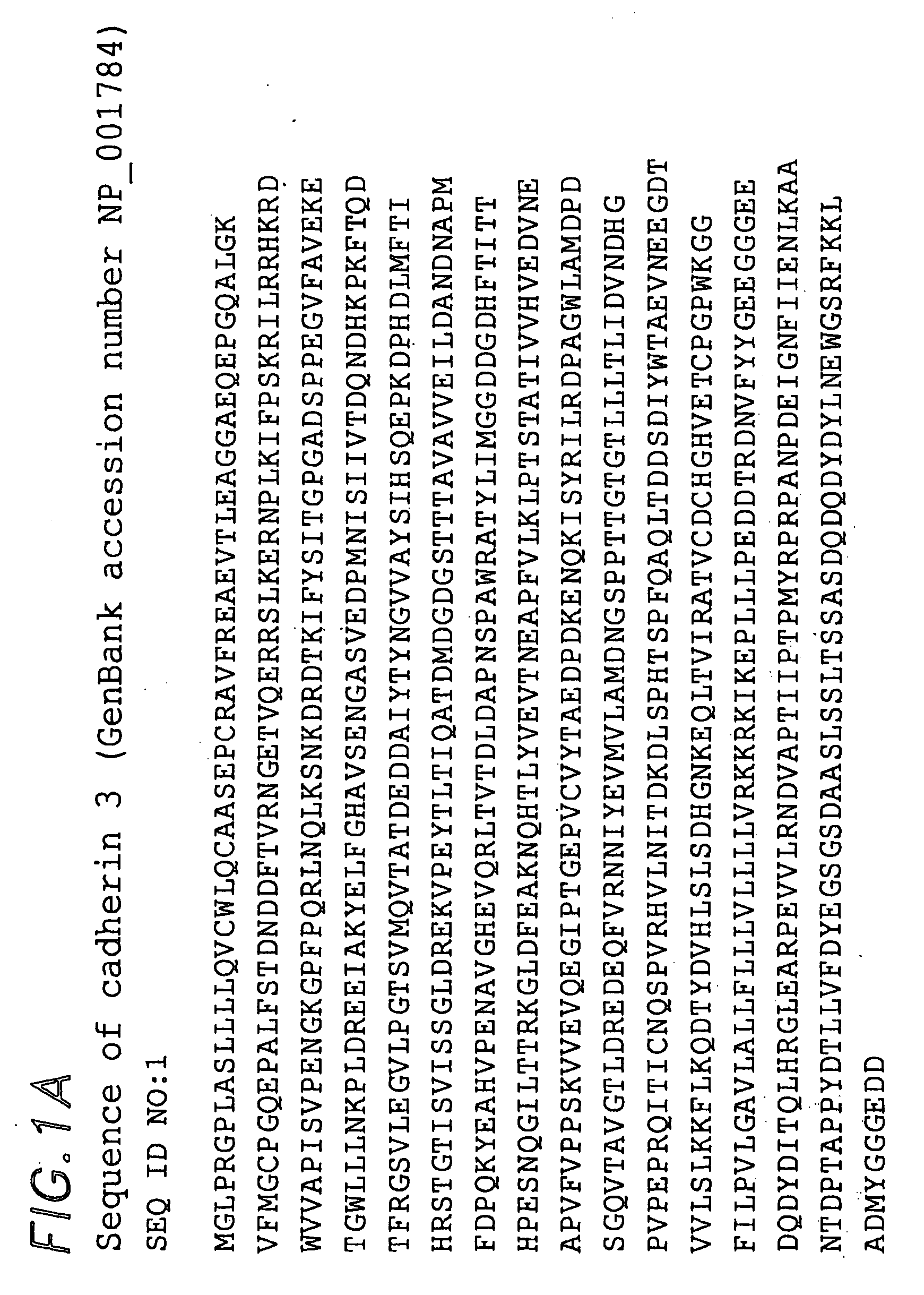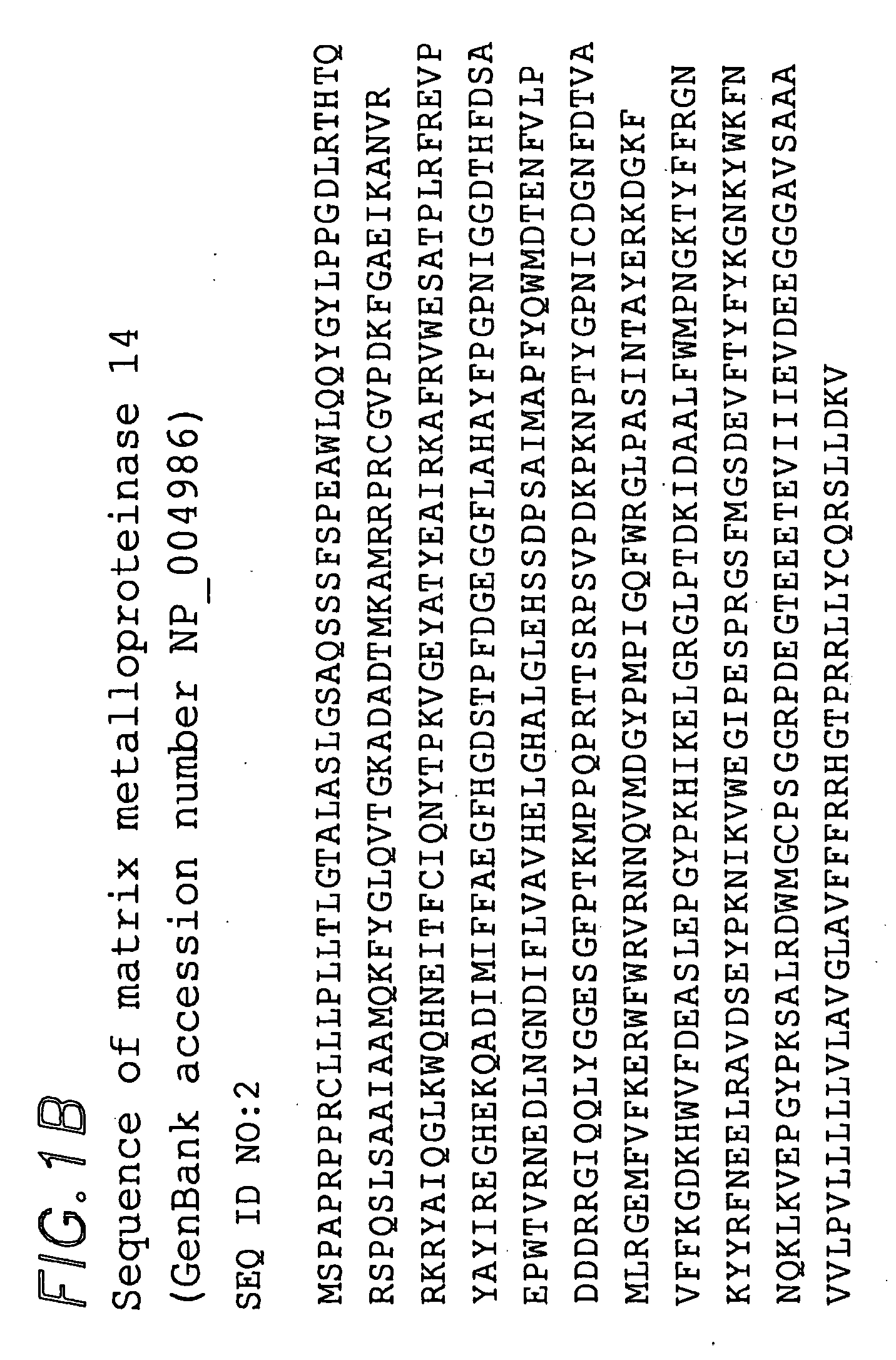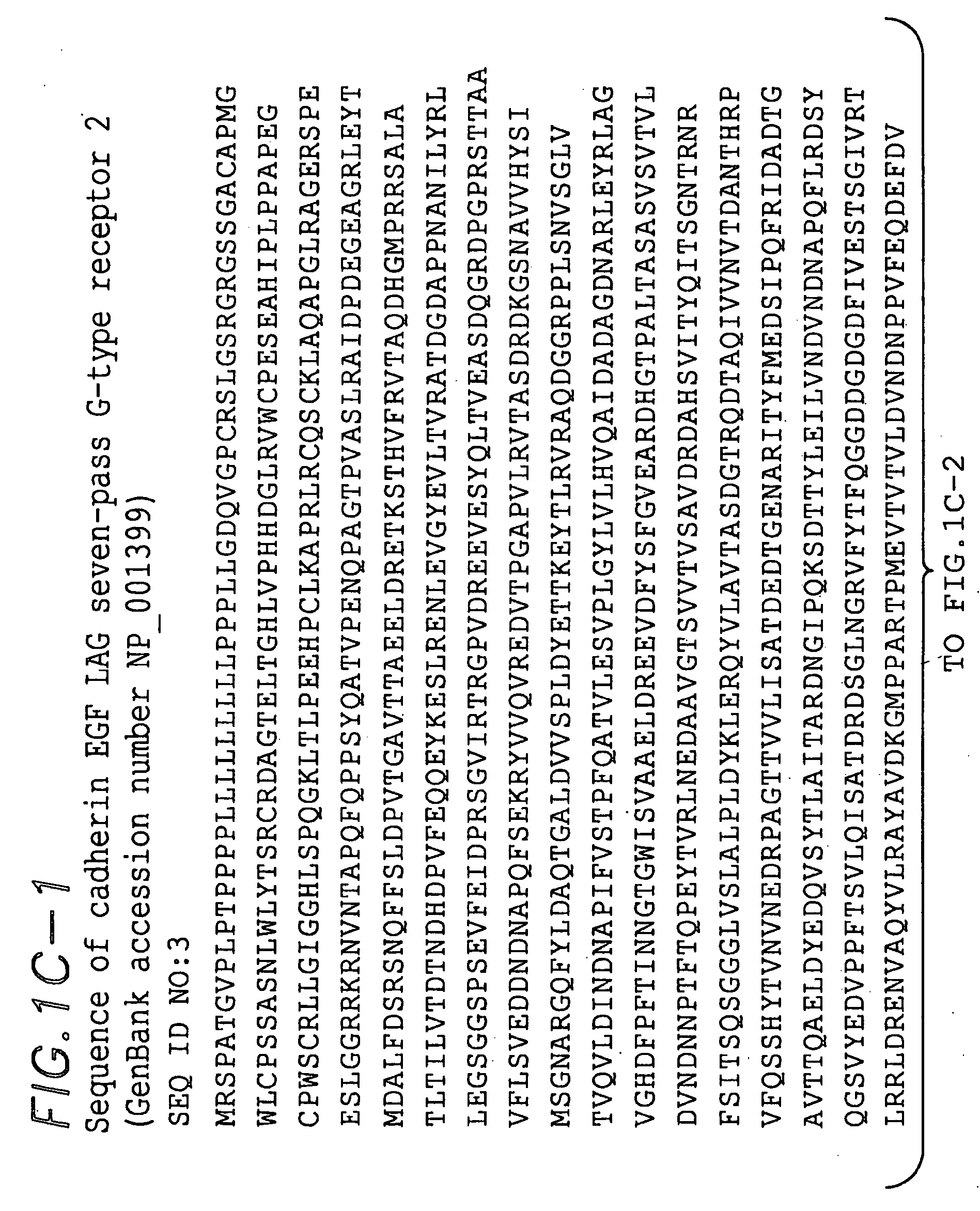Methods of classifying, diagnosing, stratifying and treating cancer patients and their tumors
a cancer patient and tumor technology, applied in the field of cancer patients and tumors, can solve the problems of inability to detect diagnostic tools, inability to predict the clinical behavior of breast tumors, and serious limitations in the approach
- Summary
- Abstract
- Description
- Claims
- Application Information
AI Technical Summary
Benefits of technology
Problems solved by technology
Method used
Image
Examples
example 1
Preparation of Microarrays Containing 8498 Human cDNAs
[0205] The human cDNA clones used in this study were obtained from Research Genetics (Huntsville Ala., USA) as bacterial colonies in 96-well microtiter plates. The clones were chosen from a set of 15,000 cDNA clones that corresponded to the Research Genetics Human Gene Filters sets GF200-202 (www.resgen.com / ). These clones form part of a set of clones assembled by the I.M.A.G.E. consortium (Lennon, G. G., Auffray, C., Polymeropoulos, M., Soares, M. B. The I.M.A.G.E. Consortium: An Integrated Molecular Analysis of Genomes and their Expression. Genomics 33:151-152, 1996) and are identified by I.M.A.G.E. clone ID numbers. All clones printed on these arrays were sequence validated as part of a product offered at Research Genetics, Inc. We estimate that greater than 97% of the clones on the array are correctly identified.
[0206] A detailed protocol for the production of the cDNA microarrays used in this study is available at cmgm.sta...
example 2
Cell Lines, Breast Tissue, and Breast Tumor Samples for Microarray Analysis and Preparation of mRNA Samples
Common Reference Sample
[0242] Each of the 84 experimental samples tested here was analyzed by a comparative hybridization, using a common reference RNA pool as a standard; this reference sample was composed of equal mixtures of mRNA isolated from 11 established cell lines derived from human tissue (MCF7, Hs578T, OVCAR3, HepG2, NTERA2, MOLT4, RPMI-8226, NB4+ATRA, UACC-62, SW872, and Colo205: also see Table 3 for more details). The 11 cell lines were all grown to 70-90% confluence in RPMI medium, containing 10% Fetal Calf Serum and Penicillin / Streptomycin. The cells were harvested either by scraping or centrifugation, quickly resuspended in RNA lysis buffer and mRNA prepared using the FastTrack™ 2.0 mRNA Isolation Kit (Invitrogen, Carlsbad, Calif.) according to the manufacturer's instructions. In each case, multiple individual mRNA preparations were collected for each cell lin...
example 3
Characterization of Breast Tissue and Tumor Samples
[0246] For all but two of the tumor specimens (i.e. New York 1 and New York 2), the mutational status of the TP53 gene was determined using published methods (Aas, T., et al.).
[0247] A single pathologist (applicant Matt van de Rijn) reviewed hematoxylin and eosin (H&E) sections of each tumor, including all before and after pairs, and made a histological evaluation of each while blinded to the source. Tumors were graded using a modified version of the Bloom-Richardson method (Robbins, P., et al., Hum Pathol, 26, 873-879, 1995). These data are displayed in Appendix H, Table 4. Representative H&E sections of each tumor are posted on Applicants' website at genome-www.stanford.edu / molecularportraits / .
[0248] Immunohistochemistry was performed as described previously (Perou, C., et al., 1999; Bindl, J. and Warnke, R., Am J Clin Pathol, 85, 490-493, 1986, and Natkunam, Y., et al., Am. J. Path., 156 (1), 2000). The antibodies used include...
PUM
| Property | Measurement | Unit |
|---|---|---|
| pH | aaaaa | aaaaa |
| pH | aaaaa | aaaaa |
| diameter | aaaaa | aaaaa |
Abstract
Description
Claims
Application Information
 Login to View More
Login to View More - R&D
- Intellectual Property
- Life Sciences
- Materials
- Tech Scout
- Unparalleled Data Quality
- Higher Quality Content
- 60% Fewer Hallucinations
Browse by: Latest US Patents, China's latest patents, Technical Efficacy Thesaurus, Application Domain, Technology Topic, Popular Technical Reports.
© 2025 PatSnap. All rights reserved.Legal|Privacy policy|Modern Slavery Act Transparency Statement|Sitemap|About US| Contact US: help@patsnap.com



